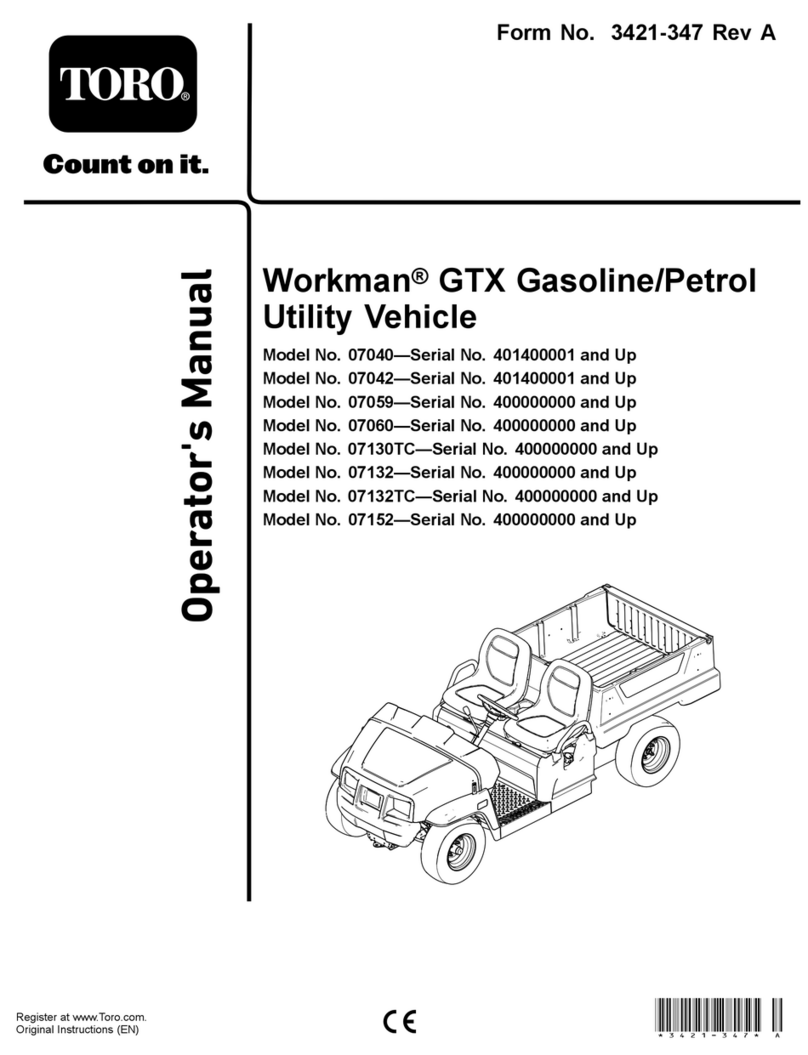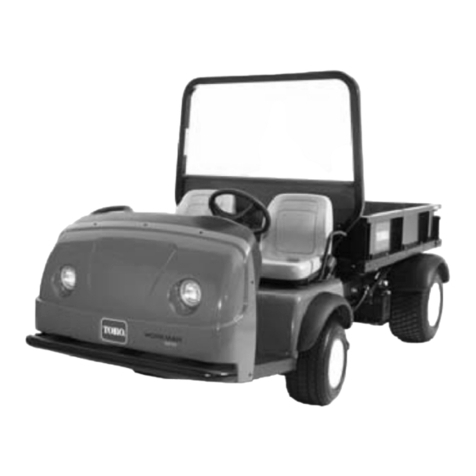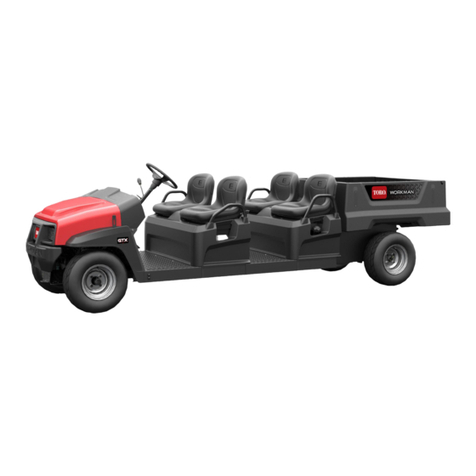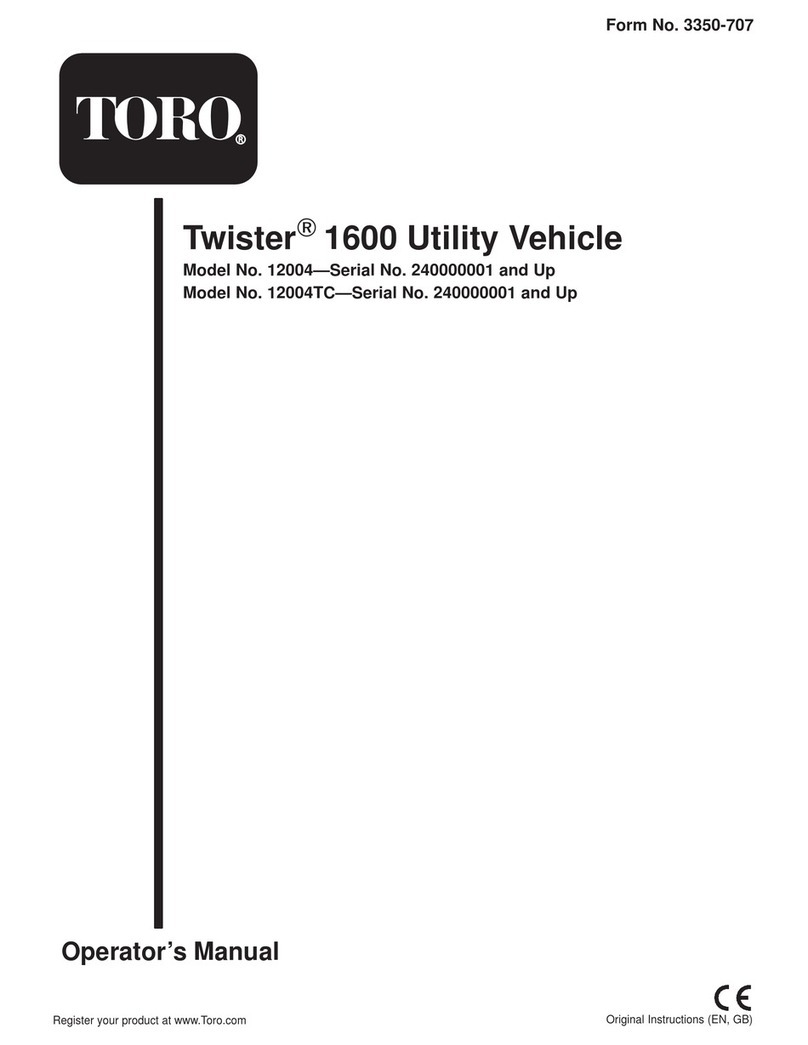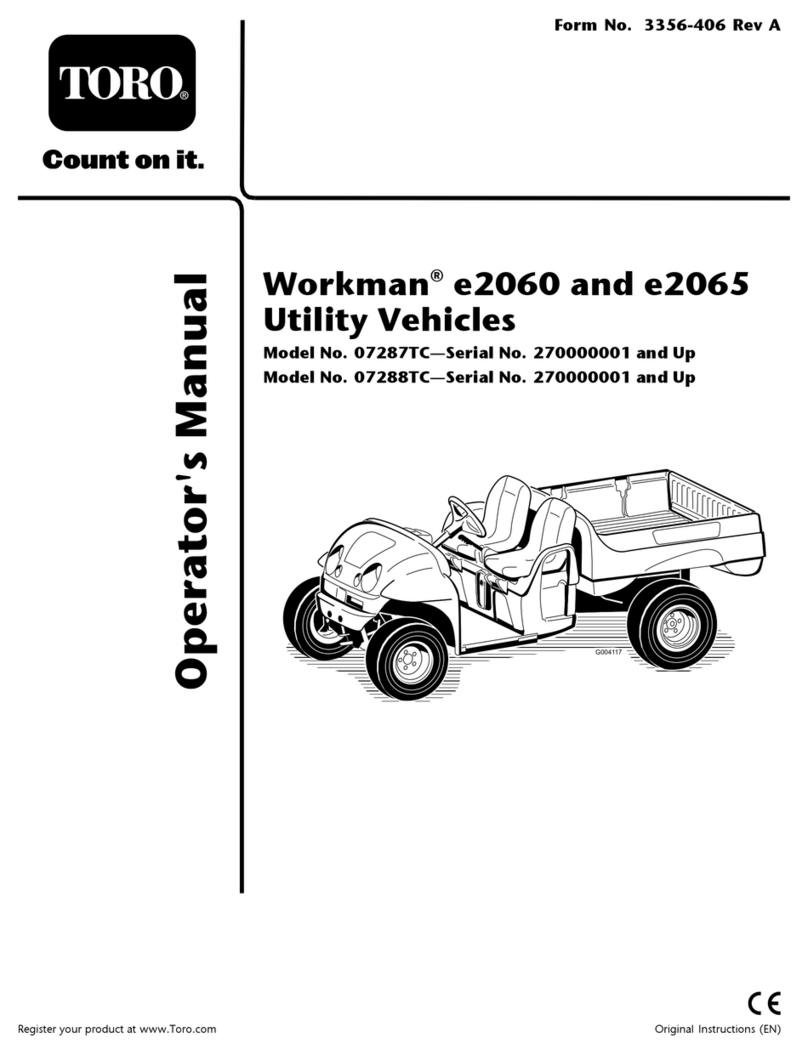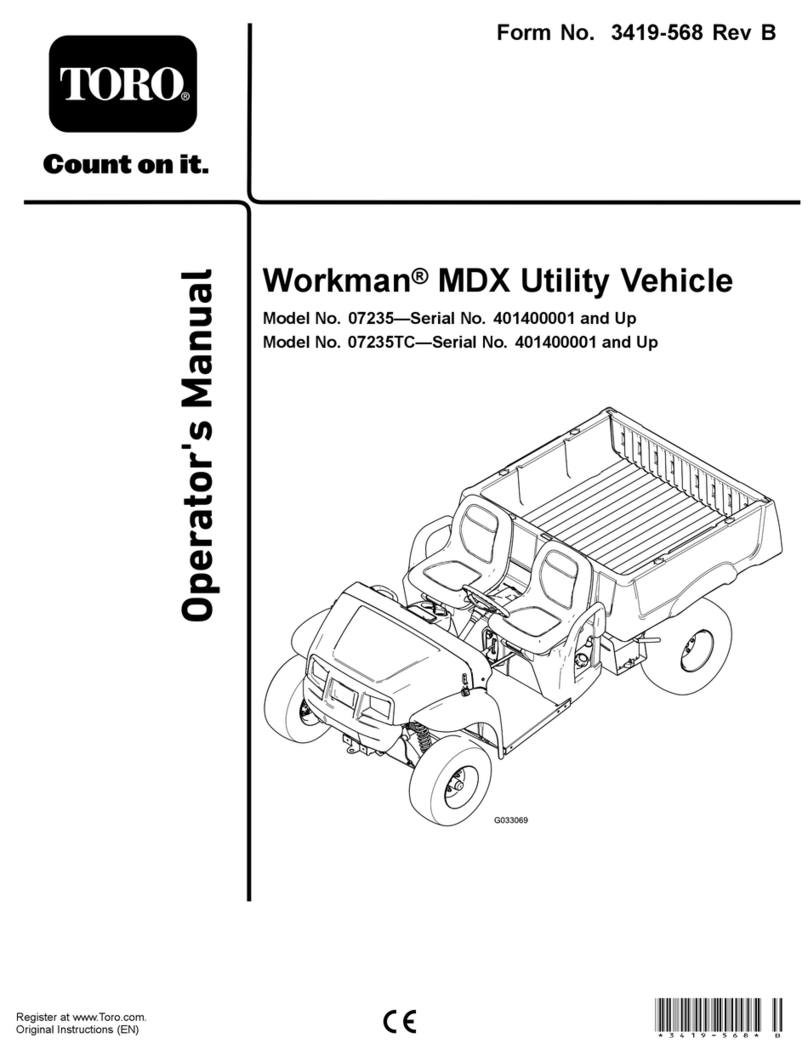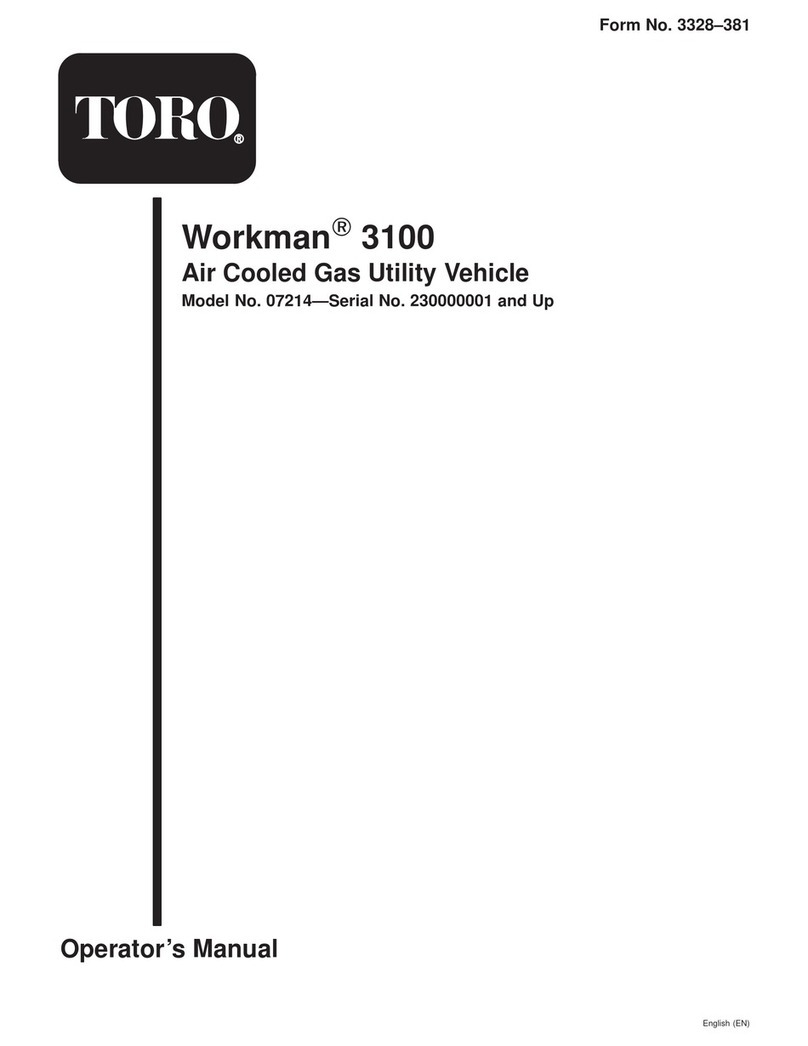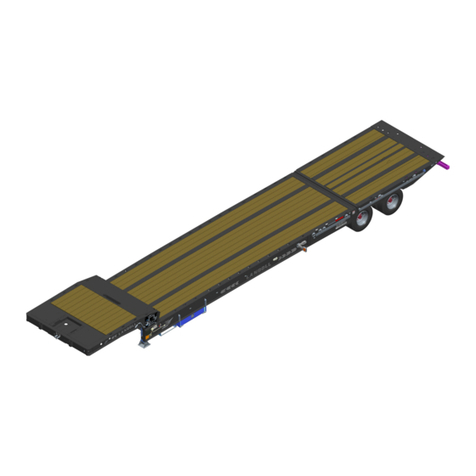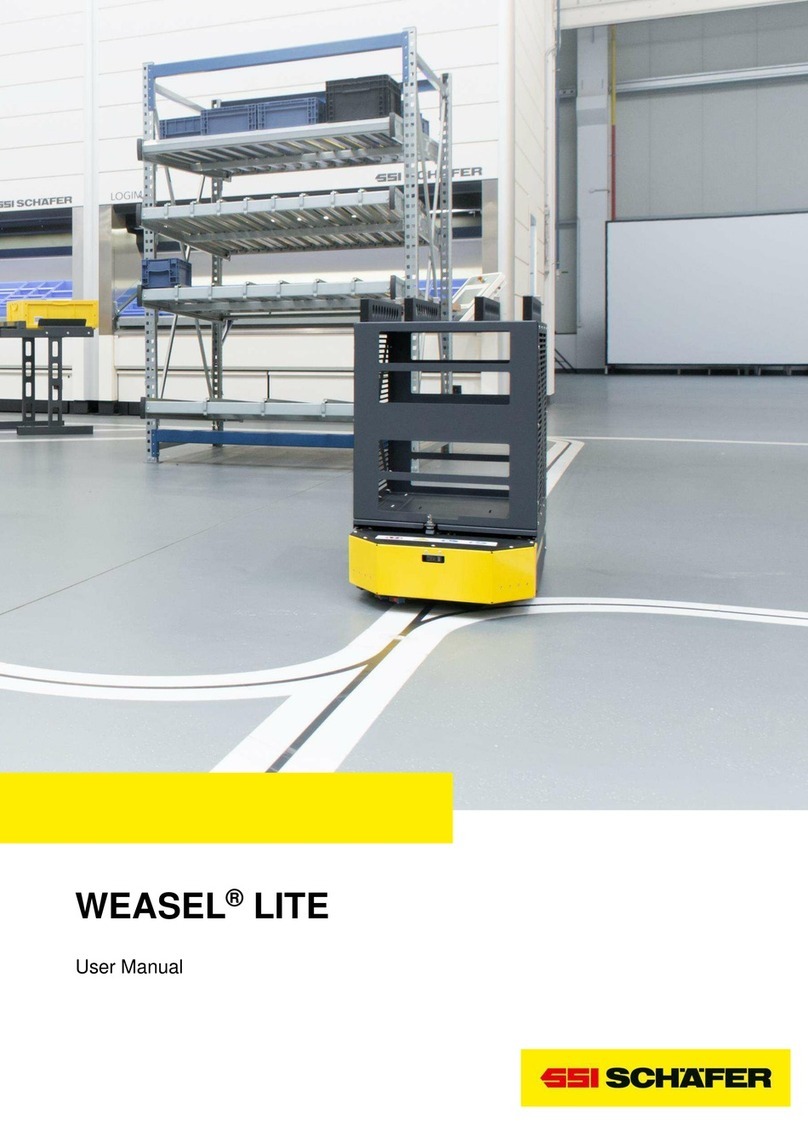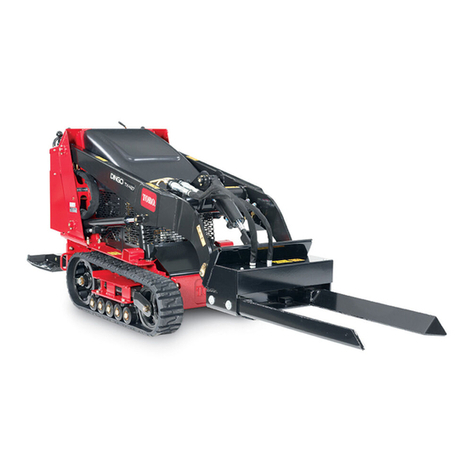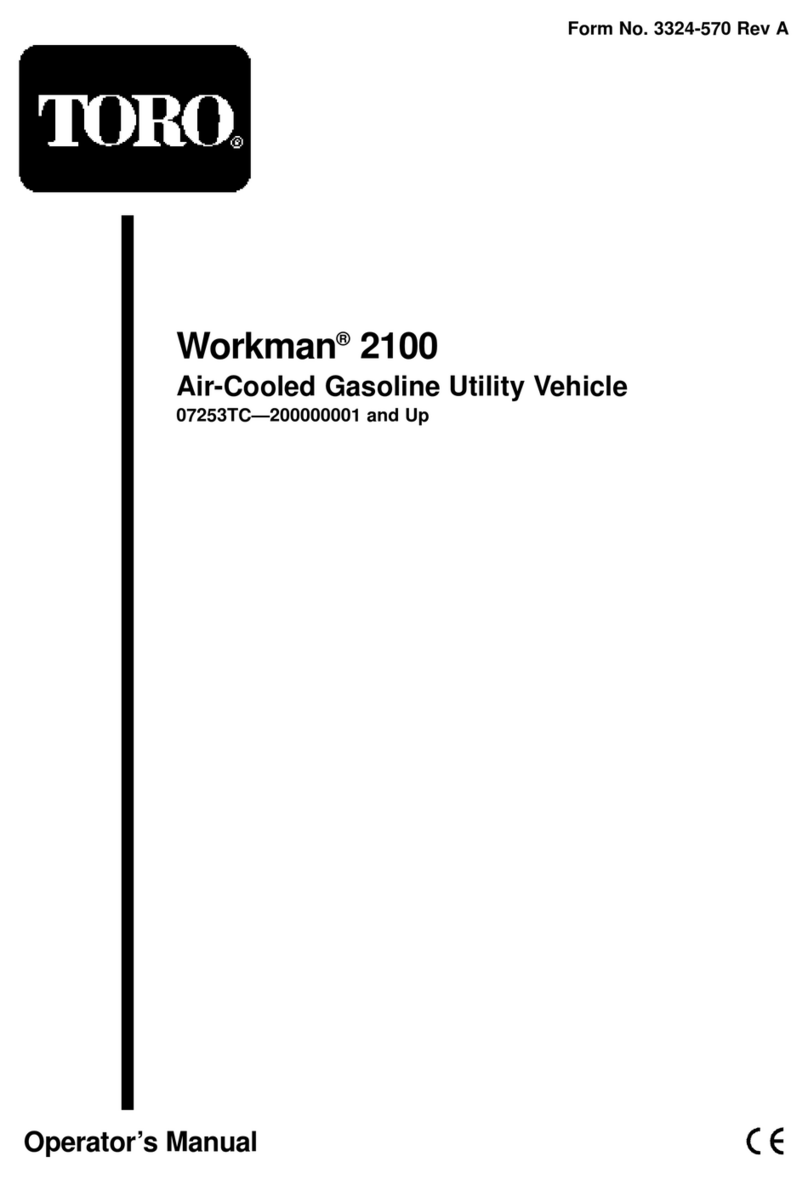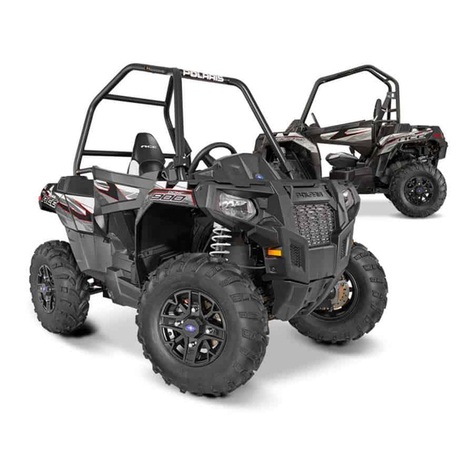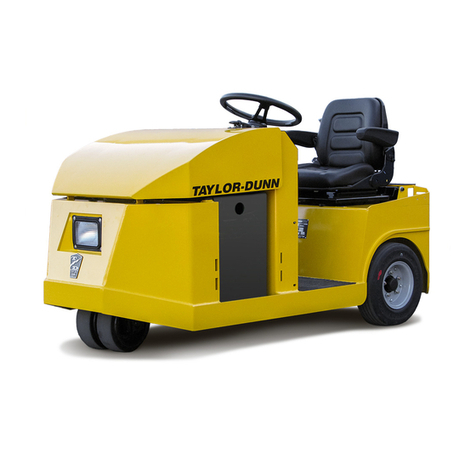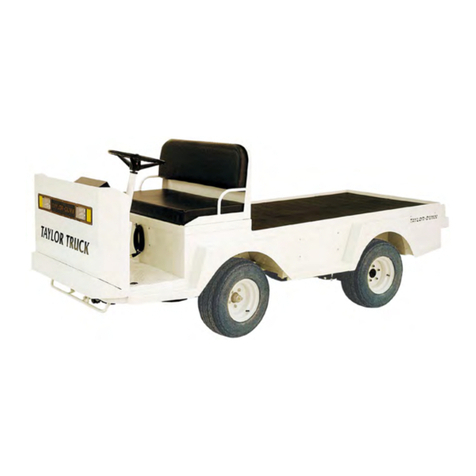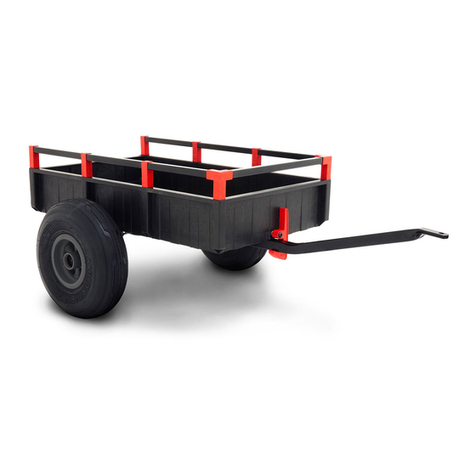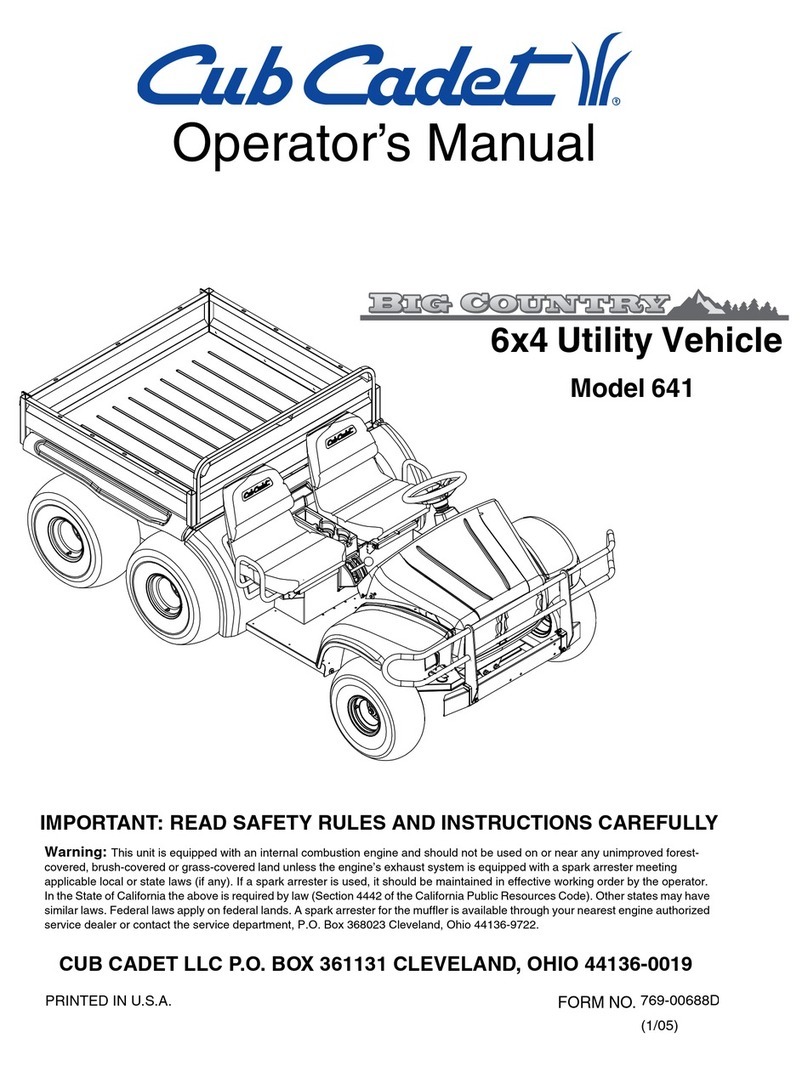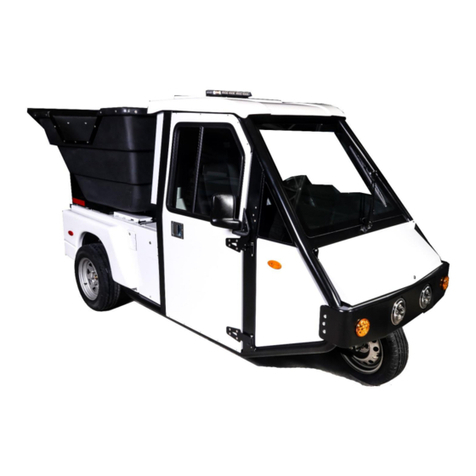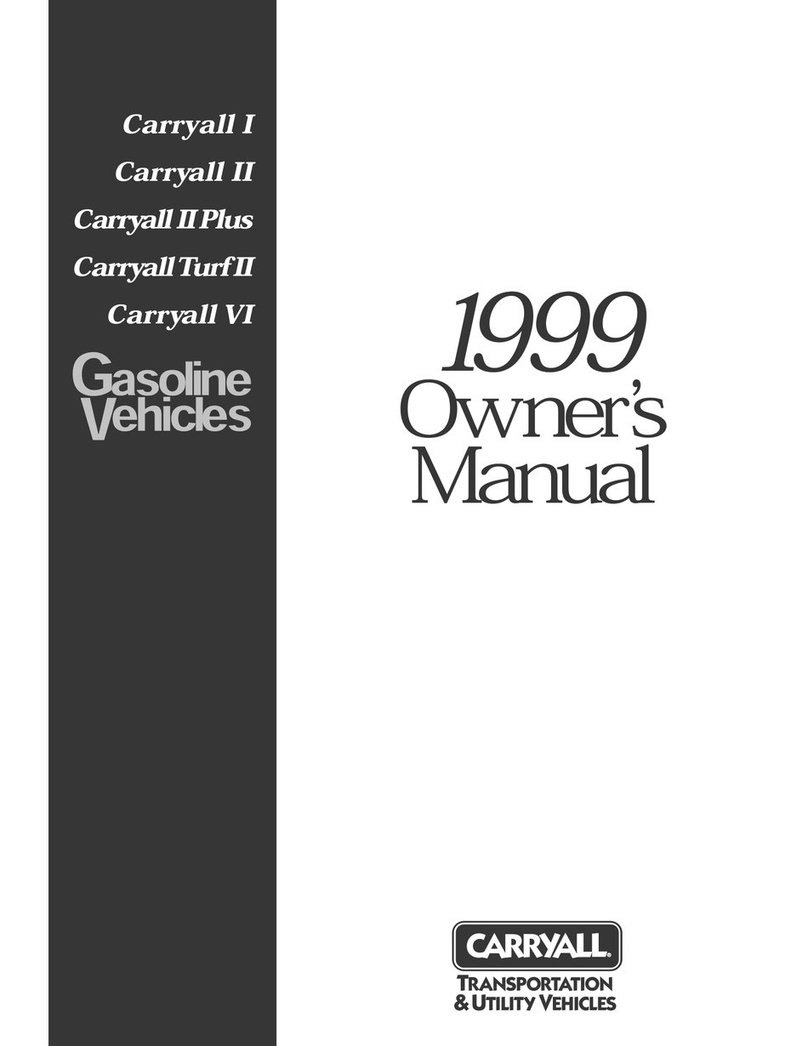
•Failuretooperatethevehiclesafelymayresultinan
accident,tipoverofthevehicle,andseriousinjury
ordeath.Drivecarefully.Topreventtippingorloss
ofcontrol:
–Useextremecaution,reducespeed,andmaintain
asafedistancearoundsandtraps,ditches,creeks,
ramps,unfamiliarareas,oranyareasthathave
abruptchangesingroundconditionsorelevation.
–Watchforholesorotherhiddenhazards.
–Useextracautionwhenoperatingthevehicleon
wetsurfaces,inadverseweatherconditions,at
higherspeeds,orwithafullload.Stoppingtime
anddistancewillincreasewithafullload.
–Avoidsuddenstopsandstarts.Donotgofrom
reversetoforwardorforwardtoreversewithout
rstcomingtoacompletestop.
–Slowdownbeforeturning.Donotattempt
sharpturnsorabruptmaneuversorotherunsafe
drivingactionsthatmaycausealossofvehicle
control.
–Whendumping,donotletanyonestandbehind
thevehicleanddonotdumptheloadonanyone’s
feet.Releasethetailgatelatchesfromthesideof
thebox,notfrombehind.
–Onlyoperatethevehiclewhenthecargoboxis
downandlatched.
–Beforebackingup,looktotherearandensure
thatnooneisbehindyou.Backupslowly.
–Watchoutfortrafcwhenyouarenearor
crossingroads.Alwaysyieldtherightofway
topedestriansandothervehicles.Thisvehicle
isnotdesignedforuseonstreetsorhighways.
Alwayssignalyourturnsorstopearlyenough
sothatotherpeopleknowwhatyouplantodo.
Obeyalltrafcrulesandregulations.
–Theelectricalsystemofthevehiclecanproduce
sparkscapableofignitingexplosivematerials.
Neveroperatethevehicleinornearanarea
wherethereisdustorfumesintheairwhichare
explosive.
–Ifyouareeverunsureaboutsafeoperation,stop
workandaskyoursupervisor.
•Ifthevehicleevervibratesabnormally,stop
immediately,waitforallmotiontostop,andinspect
thevehiclefordamage.Repairalldamagebefore
commencingoperation.
•Beforegettingoffoftheseat:
1.Stopthemovementofthevehicle.
2.Settheparkingbrake.
3.TurnthekeytoOff.
4.Removethekey.
Note:Ifthevehicleisonanincline,blockthe
wheelsaftergettingoffofthevehicle.
5.Lightningcancausesevereinjuryordeath.If
lightningisseenorthunderisheardinthearea,
donotoperatethemachine;seekshelter.
Braking
•Slowdownbeforeyouapproachanobstacle.This
givesyouextratimetostoporturnaway.Hitting
anobstaclecandamagethevehicleanditscontents.
Moreimportant,itcaninjureyouandyourpassenger.
•GrossVehicleWeight(GVW)hasamajorimpacton
yourabilitytostopand/orturn.Heavyloadsand
attachmentsmakeavehiclehardertostoporturn.
Theheaviertheload,thelongerittakestostop.
•Decreasethevehiclespeedifthecargoboxhasbeen
removedandthereisnoattachmentonthevehicle.
Thebrakingcharacteristicschangeandfaststops
maycausetherearwheelstolockup,whichmay
affectthecontrolofthevehicle.
•Turfandpavementaremuchmoreslipperywhen
theyarewet.Itcantake2to4timesaslongtostop
onwetsurfacesasondrysurfaces.Ifyoudrive
throughstandingwaterdeepenoughtogetthe
brakeswet,theywillnotworkwelluntiltheyare
dry.Afterdrivingthroughwater,youshouldtestthe
brakestomakesuretheyworkproperly.Iftheydo
not,driveslowlywhileputtinglightpressureonthe
brakepedal.Thiswilldrythebrakesout.
OperatingonHills
WARNING
Operatingthevehicleonahillmaycausetipping
orrollingofthevehicle,ortheenginemaystalland
youcouldloseheadwayonthehill.Thiscould
resultinpersonalinjury.
•Donotoperatemachineonexcessivelysteep
slopes.
•Donotacceleratequicklyorslamonthebrakes
whenbackingdownahill,especiallywithaload.
•Iftheenginestallsoryouloseheadwayona
hill,slowlybackstraightdownthehill.Never
attempttoturnthevehiclearound.
•Operatethevehicleslowlyonahillanduse
caution.
•Avoidturningonahill.
•Reduceyourloadandthespeedofthevehicle.
•Avoidstoppingonhills,especiallywithaload.
5

